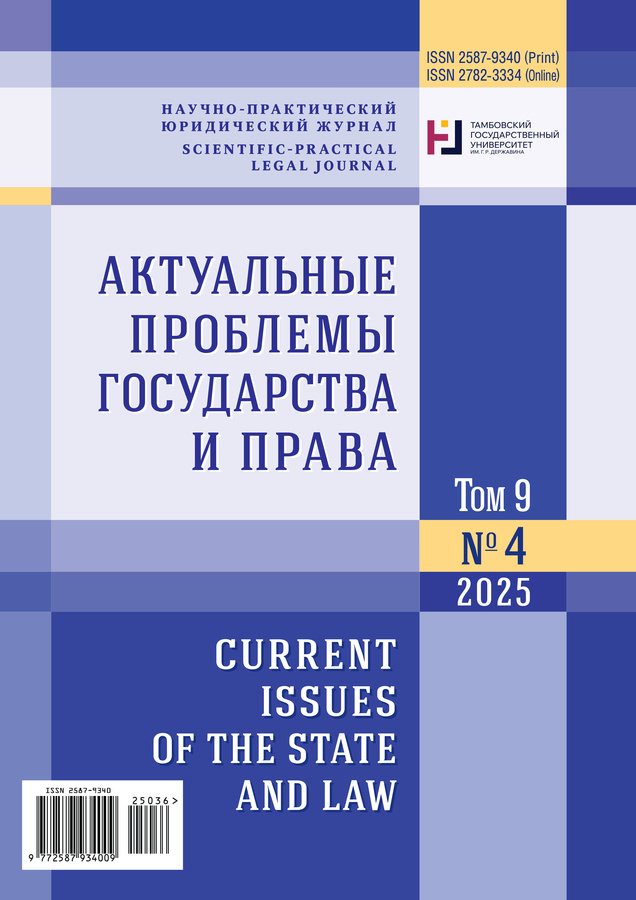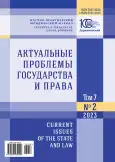Государство всеобщего благосостояния: философско-правовой аспект
- Авторы: СОЛОВЬЁВА В.В.1
-
Учреждения:
- Липецкий филиал Российской академии народного хозяйства и государственной службы при Президенте Российской Федерации
- Выпуск: Том 7, № 2 (2023)
- Страницы: 205-211
- Раздел: Общая теория и история права и государства
- URL: https://journal-vniispk.ru/2587-9340/article/view/303462
- ID: 303462
Цитировать
Полный текст
Аннотация
Рассмотрена доктрина государства всеобщего благосостояния. Государство всеобщего благосостояния – теория, сформулированная Дж. Кейнсом в труде «Общая теория занятости, процента и денег» (1936) и развитая Дж. Мюрдаль, Дж. Стречи, А. Пигу и др., в соответствии с которой государство является выразителем интересов всех слоев общества и: 1) оказывает позитивное влияние на частный сектор путем регулирования и контроля – политику цен, налогов; 2) осуществляет политику полной занятости и предупреждения экономических кризисов с помощью системы планирования и прогнозирования; 3) осуществляет политику социальных услуг – социальное обеспечение, социальное страхование, помощь больным и старым людям и т. д., за счет чего достигается высокий уровень жизни общества. Государство всеобщего благосостояния можно охарактеризовать как теорию социальной защиты в олигархических обществах. На формирование теории государства всеобщего благосостояния оказали влияние теории прав человека, социалистические и эгалитарные теории. Теоретическим основанием теории государства всеобщего благосостояния являются теории благосостояния (от классической либеральной до социальной теории благоденствия). Универсальной классификации государства всеобщего благосостояния не существует и не может существовать, потому что невозможно учесть все аспекты из-за отсутствия соответствующих статистических данных и показателей. По нашему мнению, несмотря на определенные оговорки, классификация Г. Эспинг-Андерсена является самой успешной попыткой количественного анализа различных моделей социальной защиты. В ее основу положен анализ признаков доступности и степени охвата населения определенными социальными выплатами и доходами с одновременным учетом реального влияния различных политических сил на этот процесс. Г. Эспинг-Андерсен выделил три основных модели: либеральную, консервативную, социал-демократическую.
Ключевые слова
Об авторах
Виктория Викторовна СОЛОВЬЁВА
Липецкий филиал Российской академии народного хозяйства и государственной службы при Президенте Российской Федерации
Автор, ответственный за переписку.
Email: viktoriya-solove@list.ru
ORCID iD: 0000-0002-3843-3675
доктор исторических наук, профессор, профессор кафедры уголовного права, процесса и криминалистики
Россия, Российская Федерация, 398050, г. Липецк, ул. Интернациональная, 3Список литературы
- Хайек Ф. Право, законодательство и свобода. М.: ИРИСЭН, Мысль, 2006. 642 с. URL: https://search.rsl.ru/ru/record/01002950478
- Кейнс Дж. Конец laissez-faire. М.: ГУ ВШЭ, 2001. 437 с. URL: https://djvu.online/file/BYMifcKsxrPgm
- Дарендорф Р. Современный социальный конфликт. Очерк политики свободы. М.: РОССПЭН, 2002. 284 с. URL: https://search.rsl.ru/ru/record/01001864449
- Dworkin R. A Matter of Principle. Cambridge; Massachusetts: Harvard University Press, 1985. 417 p. URL: https://archive.org/details/matterofprincipl0000dwor
- Нозик Р. Анархия, государство и утопия. М.: ИРИСЭН, 2008. 422 с. URL: https://search.rsl.ru/ru/record/01003399195
- Конституция Итальянской Республики / пер. с итал. Л.П. Гринберга // Конституции государств Европейского Союза / под общ. ред. Л.А. Окунькова. М.: Изд. группа ИНФРА-М-НОРМА, 1997. С. 423-450. URL: http://italia-ru.com/page/konstitutsiya-italyanskoi-respubliki
- Хеффе О. Справедливость: Философское введение. М.: Праксис, 2007. 190 с. URL: https://search.rsl.ru/ru/record/01003154294
Дополнительные файлы










